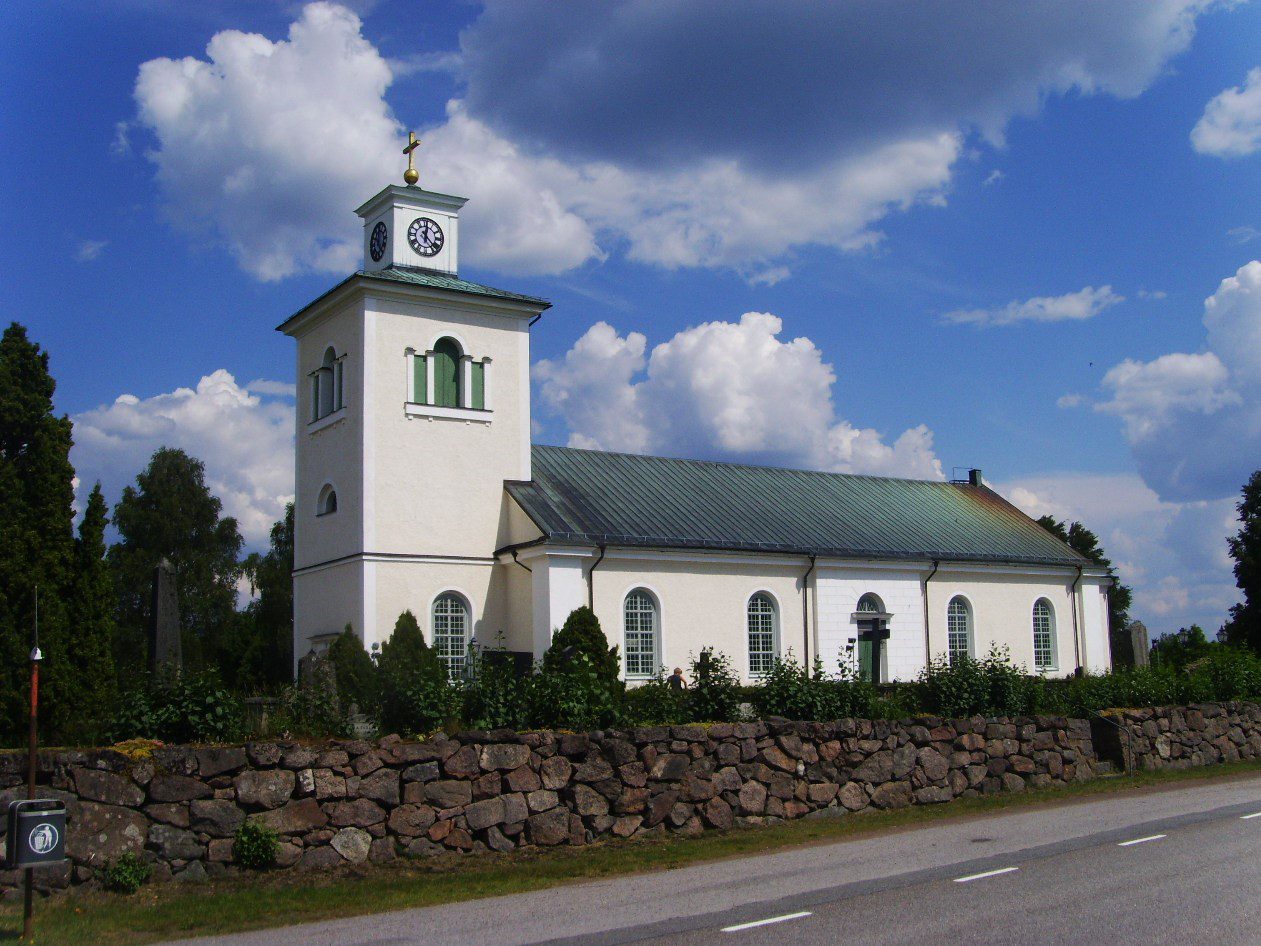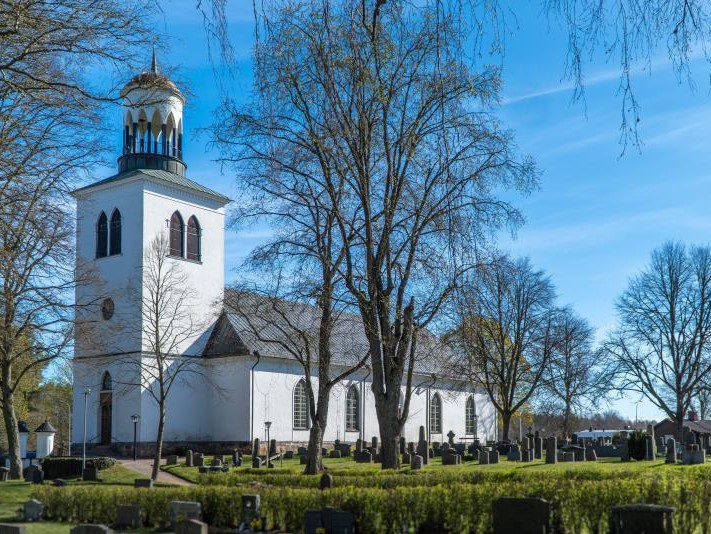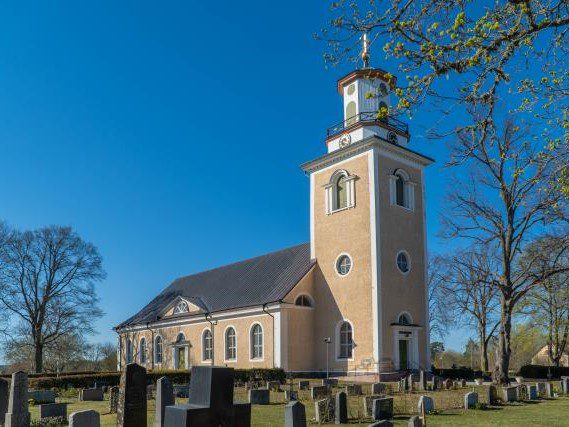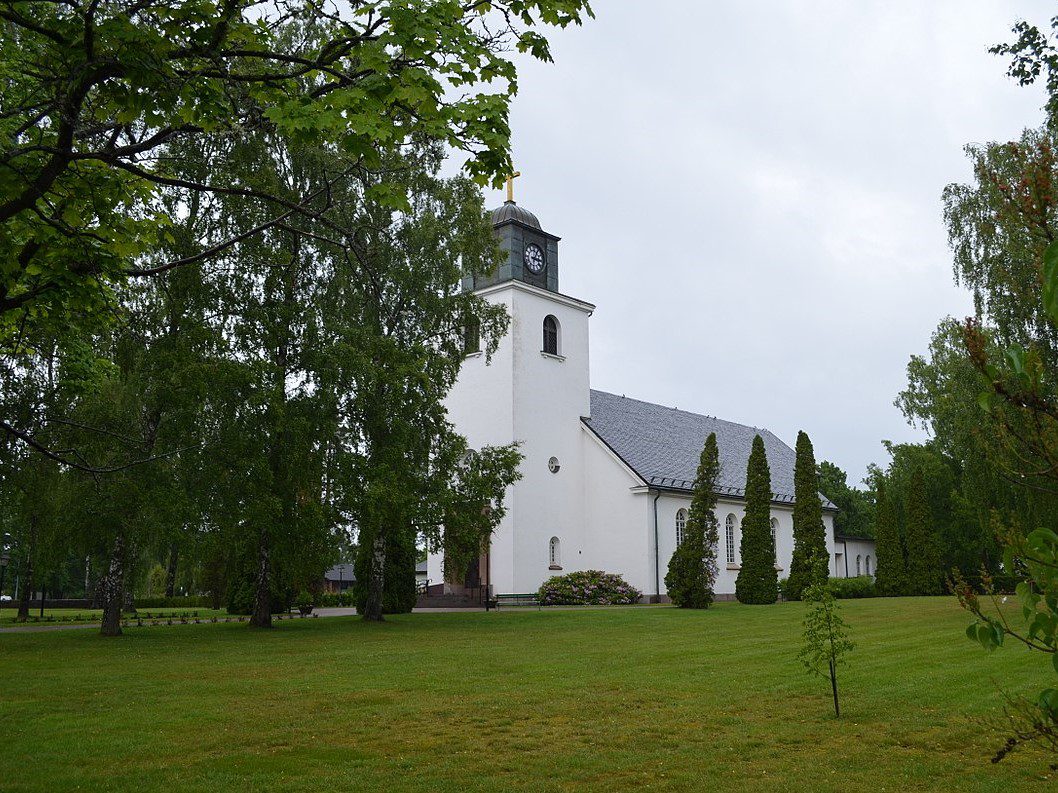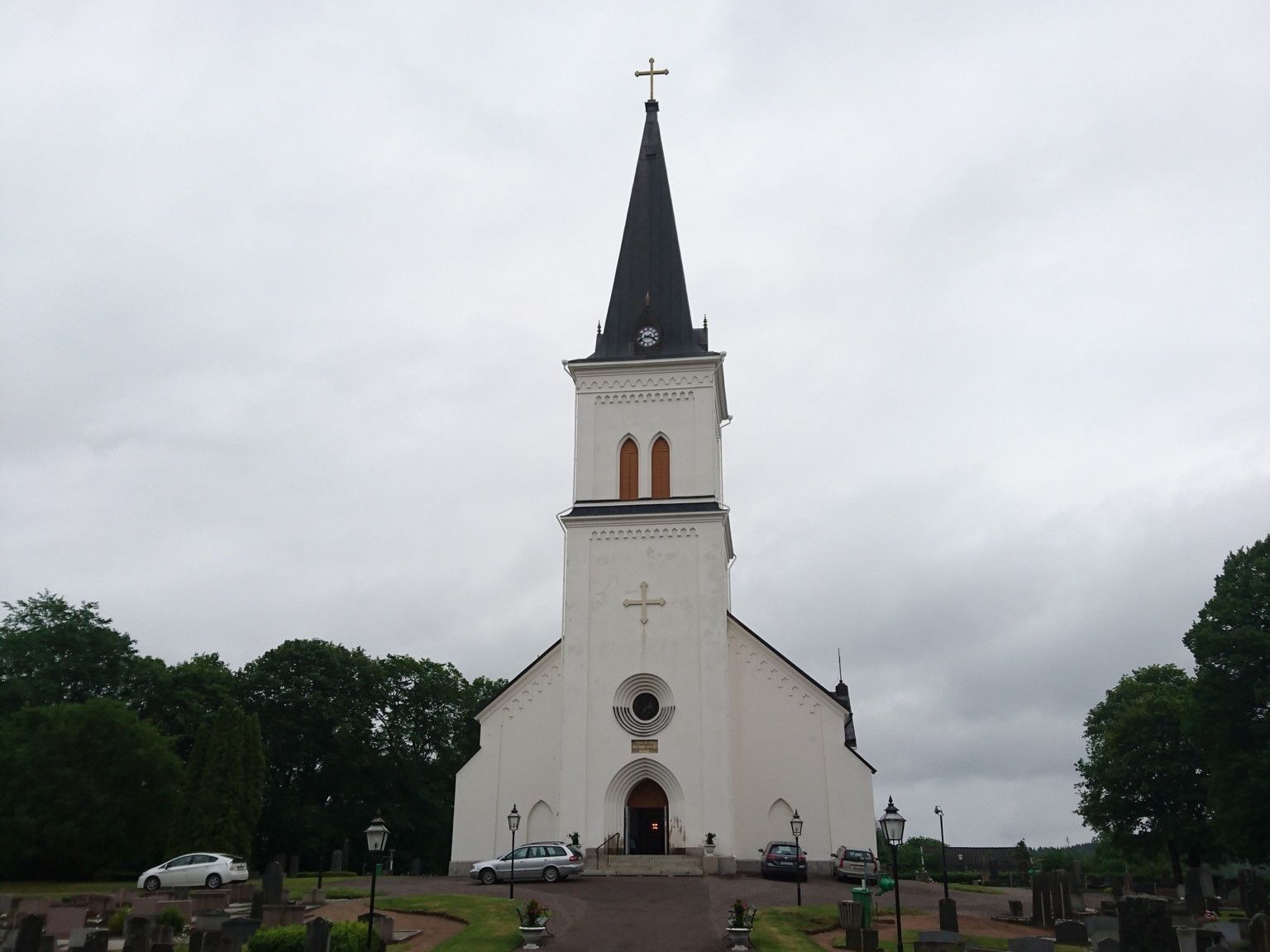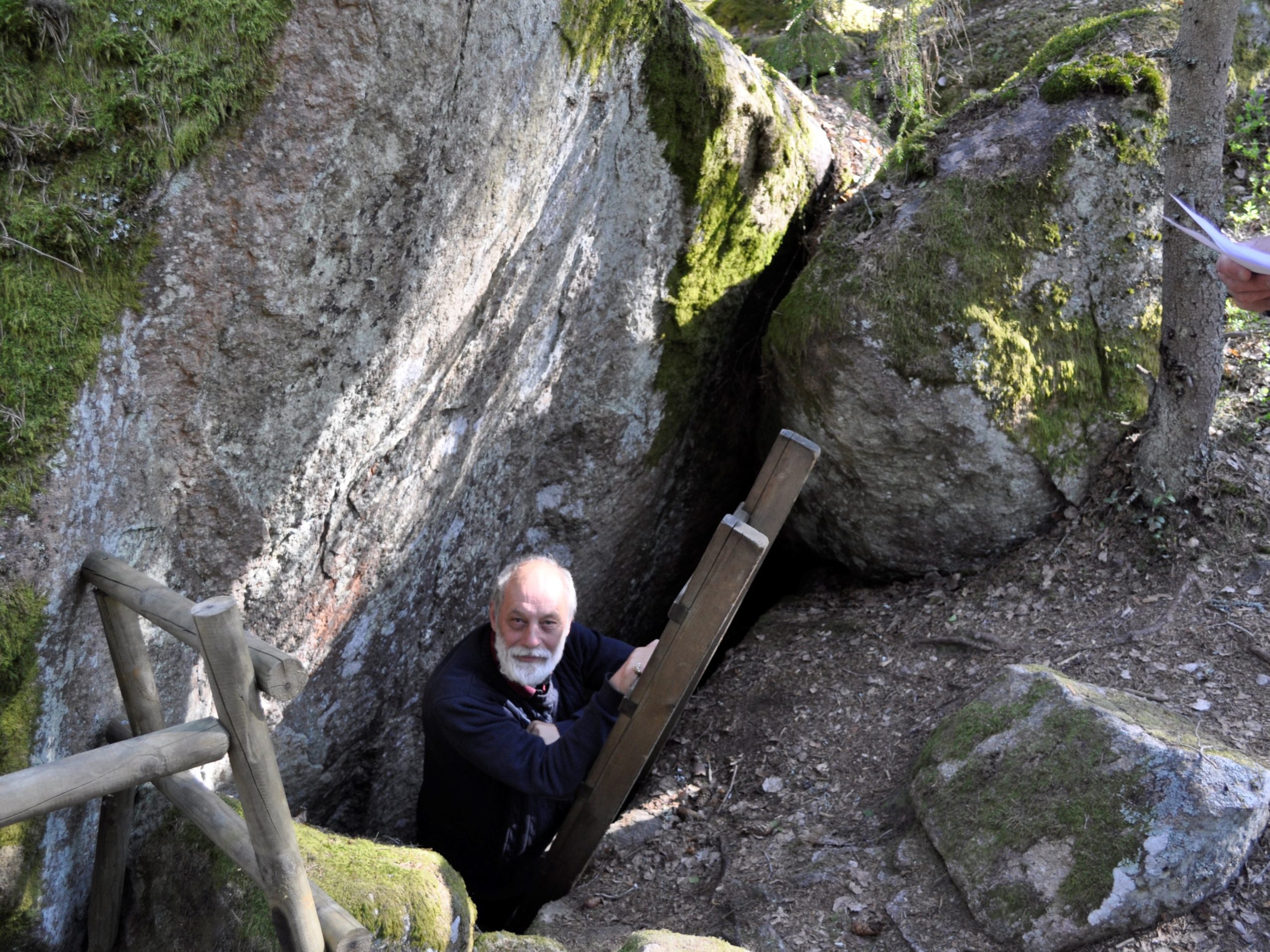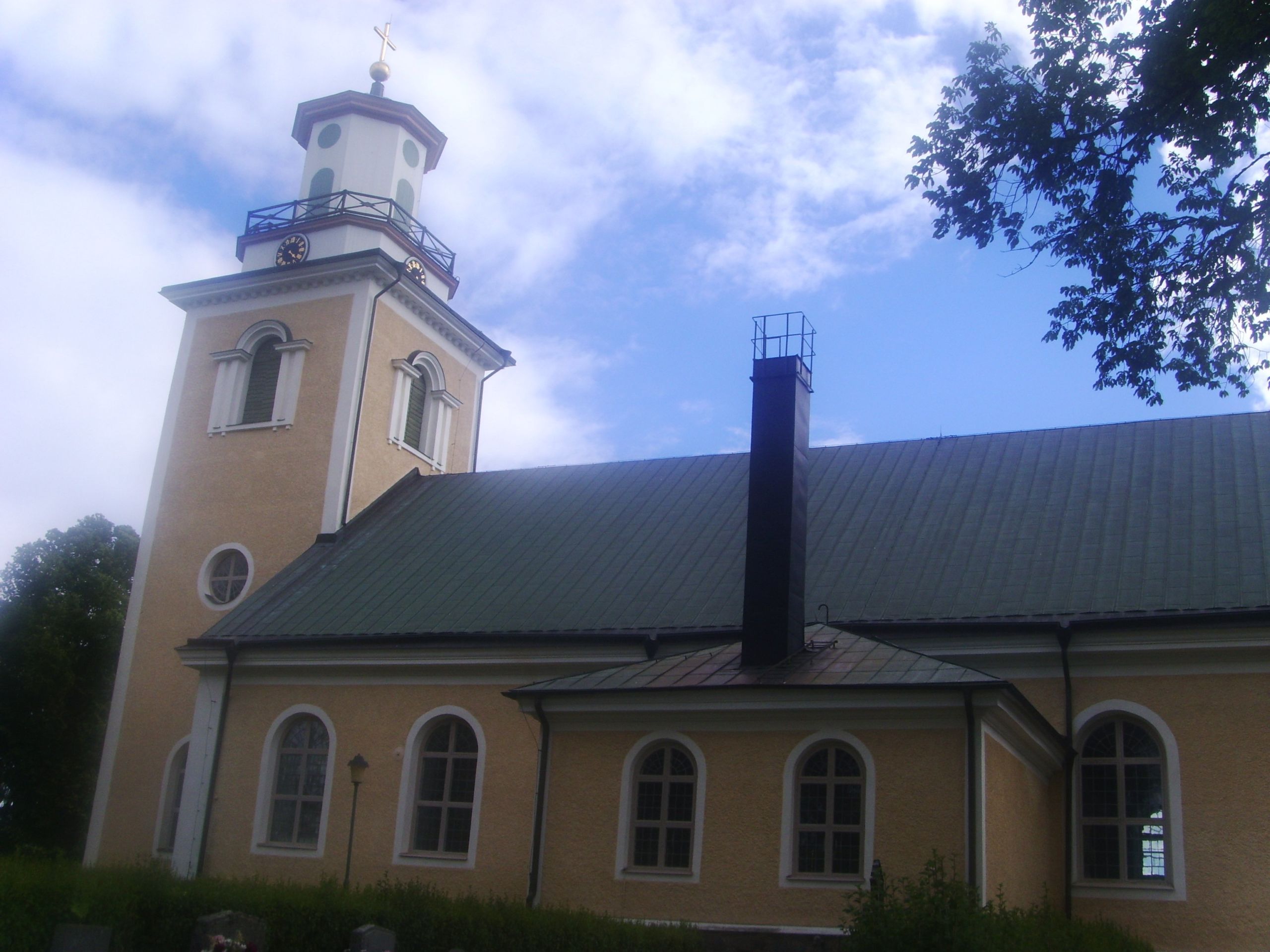
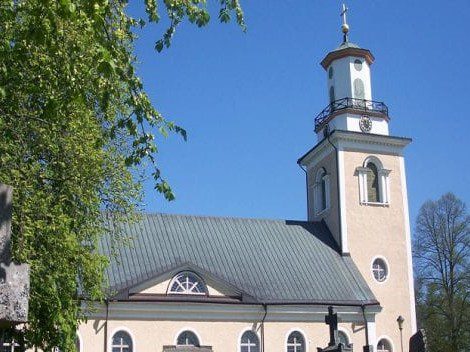
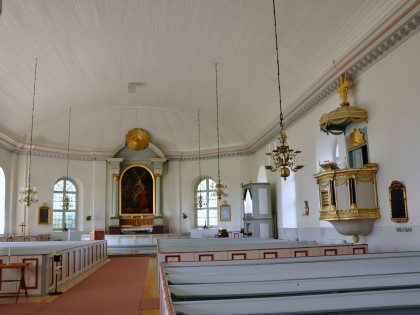
Mörlunda church is very beautifully situated with the long side towards Emådalen.
The current church was completed in 1840, but as early as 1329 there was probably a church on the same site. At the back of the church is the area's only preserved runestone.
In 1329 Rangvaldus Beronis is mentioned as curatus in Mörlunda. Probably there was already a church here then. It is well known that in 1567, during the Nordic Seven Years' War, the then church was burned. Then it was rebuilt, burned again and rebuilt. The present church was completed in 1840 and consecrated in 1843.
The parishioners did the day's work at the church building and were thus helped to get the new sanctuary ready.
The altarpiece, a copy of Rubens: "Descending from the Cross", was painted in 1840 by Salmon Andersson. The painting is surrounded by a neoclassical altarpiece.
The pulpit with ascent from the sacristy is round-shaped and adorned with golden garlands, framed pillars and a painting with text. It has a cruciform canopy and is made at the same time as the church.
Contents
The organ
The church's oldest organ was manufactured in 1762 by Lars Wahlberg. The organ was renovated and expanded by the flag lieutenant August Rosenborg in connection with it being moved into the new church. In 1945, it received a new organ plant built by A Mårtenssons Orgelfabrik AB, Lund. In 1958, the organ work was expanded by Åkerman & Lund. In 1984, a new organ plant was built by Åkerman & Lund.
At the back of the church is the area's only preserved runestone. It has probably been erected from the beginning in connection with the Iron Age burial field at Sinnerstad's dams, just north of Mörlunda. In 1907, pieces of the stone were found in a cultivation cairn, but it was not until 1936 that the pieces were joined together and the stone was erected at the church. The runes are about 15 cm high and the inscription says that someone "had this stone erected after Härulf, his father and Assur and Inger". At this time, Inger was used as a male name.
Inside the old church that existed before 1840 were two more rune stones. These have now disappeared.
The back of the church
At the back of the church is the area's only preserved runestone. It has probably been erected from the beginning in connection with the Iron Age burial field at Sinnerstad's dams, just north of Mörlunda. In 1907, pieces of the stone were found in a cultivation cairn, but it was not until 1936 that the pieces were joined together and the stone was erected at the church. The runes are about 15 cm high and the inscription says that someone "had this stone erected after Härulf, his father and Assur and Inger". At this time, Inger was used as a male name.
Inside the old church that existed before 1840 were two more rune stones. These have now disappeared.
Share
Reviews
The whole of Mörlunda is nostalgia for me. Been there every life during school days, since every high weekend until 2000 when the last old one disappeared. I have been inside the church many times. Already as a child and the last time in autumn 2000. Now there is a visit to the cemetery once a year to visit relatives and celebrities who lie there.
